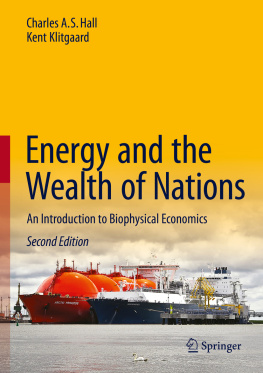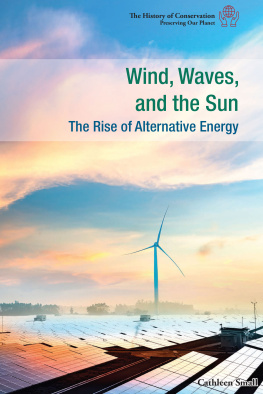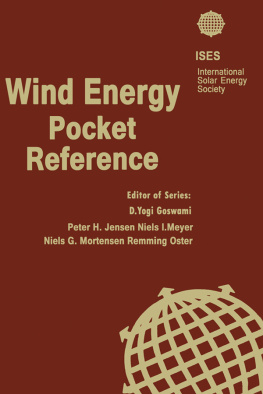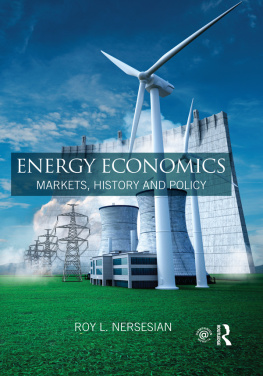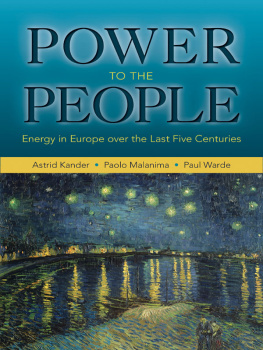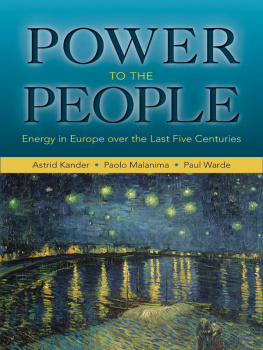Economies exist independently of how we study them. Consequently, there may be significant differences between how an actual economy operates and how we study it. In this section, we will assess how we perceived and taught economics at various times. We begin with the dominance perspective of today, neoclassical economics, in chapter one. In the second chapter, we examine various perspectives from the history of economic analysis from the 18th to the 20th centuries, focusing on the diverse theoretical viewpoints from the past, most of which have little to do with the dominant view of the present. Chapter adds a social perspective that is part of, and consistent with, the essential biophysical framework of this innovative approach.
In general, the entire discipline of economics has paid only a very little attention to energy even though energy was, and remains, the basis of economic activity and growth. Rather economics has treated energy as it treats any other material resource: as a commodity, useful but ultimately substitutable by other commodities. Historically, economists focused their efforts upon capital and labor, and, occasionally, land as the driving economic forces. However, energy issues lay not far beneath the surface of economic reality and many economic concepts. Before the era of classical political economy, English manufacturers had learned to substitute coal for increasingly scarce charcoal to provide heat for their processes. In 1784, James Watt patented a steam engine that could provide rotary motion. The coal-driven industrial revolution was soon to follow. Economies had a new characteristic: growth. Economists now think of growth as a normal characteristic of economies, but this is only a relatively recent phenomenon, and it is highly linked to increasing energy supplies, something that was not characteristic before about 1800.
This book is written by an ecologist and an economist, and part of our objective is to assess where insights and principles from these two disciplines can be combined to understand economies and nature, and their interactions, better. While the two disciplines may appear very different, we believe instead that the phenomena they study are very similar in many ways. From a biological perspective, the economies of cities, regions, and nations can be viewed as ecosystems, with their own structures and functions, their own flows of materials and of energy, and with diversity and stability. Human-dominated systems can exhibit many of the characteristics of natural systems. At the same time, ecology is often referred to as the economy of nature. There are similarities and differences between organisms in nature and people in modern economies: lions eat gazelles and gazelles eat grasses, trout subsist on insects, and plants exploit nutrients in soils and space in which to intercept sunlight. Individuals and groups find themselves in a relentless struggle to increase their energy gains and decrease energy costs, for their ability to pass on its genes is possible only if it has managed to acquire a large net energy balance. This is also true for humans, but humans are different in that we consciously order the labor process and produce for surplus, rather than for immediate use alone. Producing for surplus dates to the Neolithic transition from hunting and gathering to settled agriculture.
When first encountering the words biophysical economics, most readers probably asked, what do those words mean? The answer is deceptively simple: The word biophysical refers to the material world, that which is usually, but not completely, covered by courses in physics, chemistry, geology, biology, hydrology, meteorology, and so on. This can be compared with a social or anthropocentric (i.e., human-centered) perspective that characterizes modern economics. In this second perspective, which is dominant in our society, humans believe that they can make any world, or set of decisions, or economic systems that they wish if they can just get the policies right and enough time has passed for new technologies to come on line. The subsequent world becomes our new reality and truth.
But we must ask: How do the powerful, governing physical laws, which we are all prepared to accept in physics, chemistry, and biology classes, operate outside of the scientists laboratory and the natural world? Scientists often think of these laws as imposing constraints on a system. Do these constraints really disappear when human ingenuity is applied to economics and markets? Most economics textbooks would lead you to this conclusion, as growth is just a matter of human actions, technologies, policies, and a healthy dose of ambition. Western culture and its leading commentators (with a few exceptions such as Joseph Tainter and Jared Diamond) do tend to elevate personal and social aspects of a problem, specifically, human actors and their ideas, above any biophysical considerations. Thus, we learn about history as the action of great leaders; wars, if not always battles, are usually won or lost due to the biophysical resources that generals can bring to bear. Napoleon once quipped that God fights on the side with the best artillery. There is little debate that the South had the better generals in the Civil War, but the North had the industrial might. The North won because of biophysical, not leadership, issues.
Most readers would not argue with the idea that we live in a world that is completely beholden to the basic laws and principles of science. These basic laws include Newtons laws of motion, the laws of thermodynamics, the law of the conservation of matter, the best first principle, the principles of evolution, and the fact that natural ecosystems tend to make soil and clean water while human-modulated systems tend to destroy both. Do economic systems operate outside of these laws? Did the seemingly unconstrained technological and economic expansion of the twentieth century show that these laws were irrelevant or at least insignificant when applied to economics and the satisfaction of human needs and wants?
There is no more important question as we attempt to move beyond the recent financial trauma of the Great Recession and the enduring secular stagnation. Unfortunately, the biophysical laws, particularly as applied to energy, are not understood or appreciated by most people, including most economists. Ironically, our focus on exploiting and investing energy in the economic process has divorced many people from the very biophysical realities that are necessary to sustain them. This includes our ways of building dwellings, living in cites, importing food, being transported and entertained, and so on while isolating our energy using activities in areas generally isolated from peoples daily lives. In this book, we examine these issues through an integrated view of economics that emphasizes scientific principles and a more frequent use of the scientific method. Together these chapters provide the beginnings of a powerful new way to think about economics.
Contents
Chapter 1 How We Do Economics Today - 5
Chapter 2 How We Got to Where We Are Today: A Brief History of Economic Thought and Its Paradoxes - 23
Chapter 3 Problems with How We Do Economics Today - 67
Chapter 4 Biophysical Economics: The Material Basis - 81
Chapter 5 Biophysical Economic: The Economic Perspective - 101

